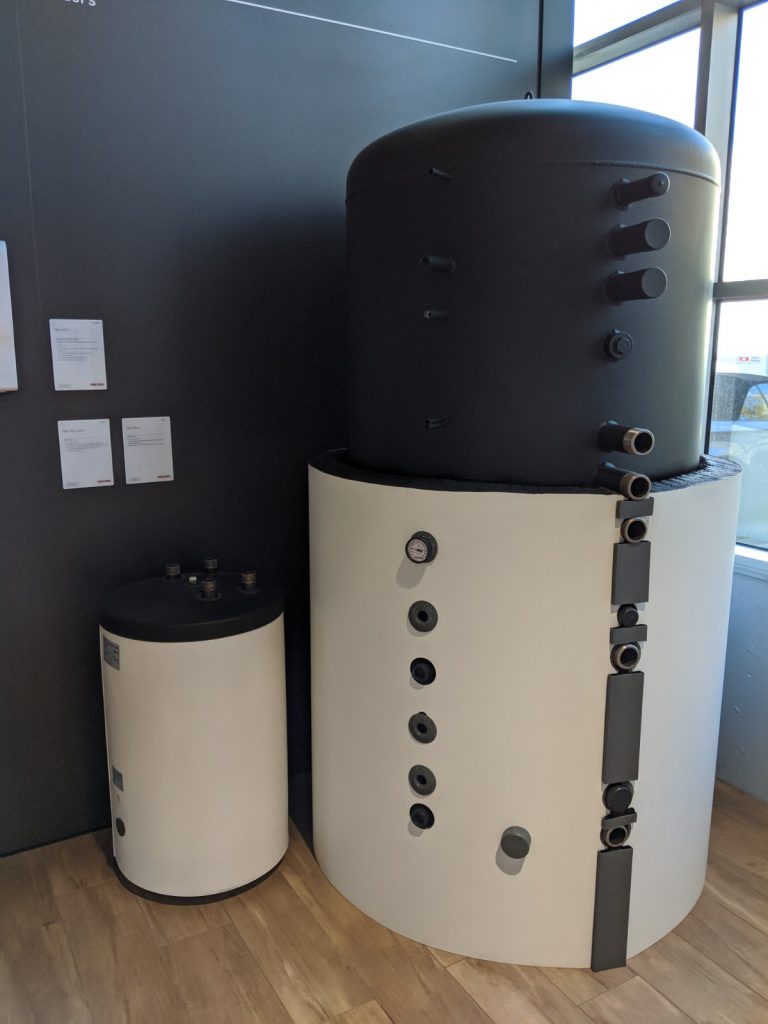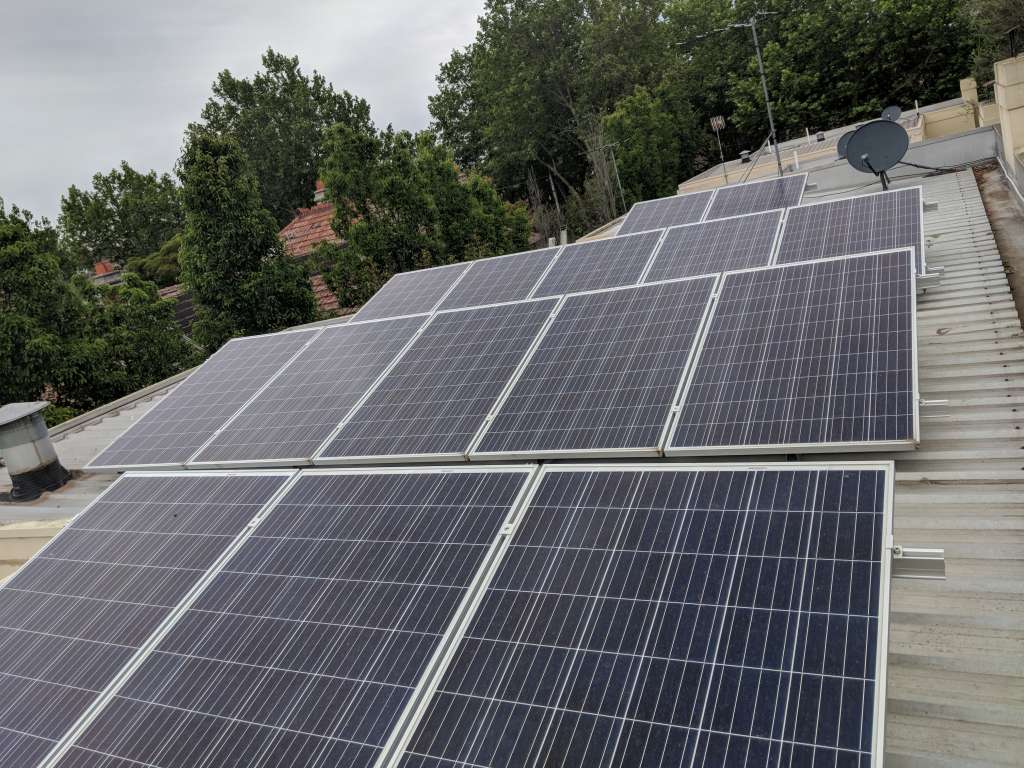
Buffer Tanks
Consider adding a larger heat pump buffer tank to create a thermal battery for your heat pump hydronic heating and cooling system.
You can increase your buffer tank size to 200, 400, 700, 1000 or even up to 1500 litres in order to create a very large thermal battery.
Buffer tanks increase the internal mass of your house by adding thermal storage to your hydronic water.
Create a heat pump thermal battery if you live in a southern, inland or alpine Australian climate, or off-grid.
Key benefits:
- Store thermal energy for use at night
- Stabilise your indoor temperature
- Absorb variable heat sources such as sunshine radiation, household appliances, fireplaces, etc
- Maximize your solar power during the day
- Improve the efficiency and life of your heat pump
Thermal Mass
Houses in southern, inland or alpine climates should be built of solid construction with high thermal mass inside the building envelope.
A key building element is an insulated concrete slab. Other building elements that add thermal mass include internal brick, stone walls and feature walls. However, brick veneer outside the building envelope does not add thermal mass where it is needed.
Water is also a very good store of thermal energy so increasing the size of the buffer tank is a good way to add thermal mass.
High Diurnal Variation
High diurnal (temperature) variation between the day and night is typical of southern and inland Australia. Thermal mass helps to moderate the temperature swings in these regions. This is because heat energy released from inside mass lags the outside temperature.
Lightweight Construction
If your house is of lightweight construction with low thermal mass inside the building envelope, then consider adding mass with a larger buffer tank. This includes houses made with weatherboards, suspended floors and also brick veneer.
Heat Pump Cooling
A heat pump has the added benefit over a gas boiler in that it can reverse cycle and provide cooling in summer.
Note that you must have a buffer tank for hydraulic separation in cooling mode. This is because the water flow between your heat pump and buffer tank will flow both ways. It will flow forward for heating and reverse for cooling. However, the water flow between your buffer tank and hydronic circuits will only flow one way, carrying warm or hot water in winter and cool or chilled water in summer.
In summer, your heat pump thermal battery works to keep your home cooler. Switch to cooling mode and your heat pump will store cool or chilled water in the buffer tank. In reverse cycle, your heat pump removes heat from inside and transfers it outside.
Heat pump cooling operates in two ways:
- Chilled water through fan coil convectors
- Cool water through underfloor hydronic systems
Chilled Water Cooling
Heat pumps can absorb moisture from the inside air by flowing chilled water through fan coil convectors. This is latent cooling, which is also a feature of air conditioning systems.
However, it is easier and better for the environment to plumb your house with water lines rather than refrigeration lines.
Therefore, consider hydronic fan coil convectors in your cooling solution.
Underfloor Cooling
If you are thinking about installing an underfloor heating system, then consider reverse cycle area cooling as well using cool water above the dew point. This is a more gentle form of cooling and is effective due to the large floor area.
It is more effective with a hard floor surfaces such as polished concrete or tiles. However, it will also provide cooling with engineered hardwood floor boards or even open weave carpets.
Shade your windows to improve the effectiveness of your underfloor cooling system, particularly western windows. This is because the sun is very powerful when it is perpendicular to your windows and will radiate straight through double glazing.
Solar Power
Install a larger buffer tank to gain more benefit from your solar power. Use your solar power to run your heat pump during the day.
Store heating or cooling energy in the thermal mass of your buffer tank water for release at night.

